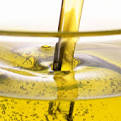




 x
x






BROOM - SPANISH - spartium junceum
FAMILY: (Leguminosae).
SYNONYMS: Genista juncea, genista, weavers broom, broom (absolute0, genet ( absolute).
GENERAL DESCRIPTION: A decorative plant, often cultivated as an ornamental shrub, up to 3 metres high with upright woody branches and tough flexible stems. It has bright green leaves and large, yellow, pea-like fragrant flowers, also bearing its seed in pods or legumes.
DISTRIBUTION: Native to southern Europe, especially southern Spain and southern France; mainly cultivated in Spain, France, Italy and USA (as a garden shrub). The absolute is produced in Southern France.
OTHER SPECIES: Closely related to dyer's broom greenweed (Genista tinctoria) and the common or green broom (Sarothamnus scoparius or Cytisus scopariius). Ther are also several other related species of broom, which are rich in their folk tradition.
HERBAL/FOLK TRADITION: The twigs and bark have been used since ancient times to produce a strong fibre which can be made into cord or coars cloth. The branches were also used for thatching, basketwork, fencing and, of course, for making brooms. Spanish broom has similar therapeutic properties to the common broom, which is still current in the British Herbal Pharmacopoeia for cardiac dropsy, myocardial weakness, tachycardia and profuse menstruation.
However, the Spanish broom is said to be five to six times more active than the common broom, and even that must be used with caution by professional herbalists due to the strength of the active ingredients; ' A number of cases of poisoning have occurred from the substitution of the dried flowers of Spartium for those of true Broom.'
ACTIONS: Antihaemorrhagic, cardioactive, diuretic, cathartic, emmenagogue, narcotic, vasoconstrictor.
EXTRACTION: An absolute is obtained by solvent extraction from the dried flowers.
CHARACTERISTICS:A dark brown, viscous liquid with an intently sweet, floral, hay-like scent with a herbaceous undertone. It blends well with rose, tuberose, cassie, mimosa, violet, vetiver and herbaceous-type fragrances.
PRINCIPAL CONSTITUENTS: The absolute contains capryllic acid, phenols, aliphatics, terpenes, esters, scoparin and sparteine, as well as wax, etc.
SAFETY DATA: Sparteine, which contained in the flowers as the main active constituent, is toxic. In large doses, it causes vomiting, renal irritation, weakens the heart, depresses the nerve cells and lowers the blood pressure, and in extreme cases causes death.
AROMATHERAPY/HOME USE: None
OTHER USES: Used in soaps, cosmetics and high class perfumery; also as a flavour ingredient in sweet rich 'preserves'. alcoholic and soft drinks.
Reference: The Encyclopedia of Essential Oils: Julia Lawless
Articles Latest
- CARDAMON
- CARAWAY
- CANANGA
- CAMPHOR
- CALAMUS
- Calamintha-Calamintha officinalis
- CAJEPUT- Melaleuca cajeputi
- Plant Expression
- Molecular Target: Cell Membrane
- CADE Essential Oil
- CABREUVA
- The Kashmiri rose oil worth millions
- Agarwood: The natural treasure worth more than gold whose heady scent is driving it towards extinction
- Nonselective Binding to Proteins: The Science of Advanced Aromatherapy
- Molecular Target: DNA, RNA, and Gene Expression
- BUCHU - Agothosma betulina
- BROOM - SPANISH - spartium junceum
- BORONiA - Boronia megastigma
- BORNEOL - Dryobalanops aromantica
- Boldo Leaf - Peumus boldus
- Birch White-Betula Alba
Articles-Most Read
- Home
- Balsam Canadian - Abies balsamea
- Copaiba Essential Oil
- Balsam Peru
- Basil French - Ocimum basilicum
- North America: Tea Tree and Monarda-3
- Basil Exotic
- North America: Tea Tree and Monarda-2
- Exploring Transcultural Constants
- Thyme Essential Oil
- Balsam Tolu
- Palma Rosa
- The Bioactivity of Essential Oils
- Benzoin - Styrax benzoin
- Why Pharmacology Cannot Demonstrate Essential Oil Efficacy
- Bay - West Indian - Pimenta racemosa
- Exploring Essential Oil Activity The Conventional Way
- Aromatherapy: An Answer
- Complex information From Plants
- Contacts
